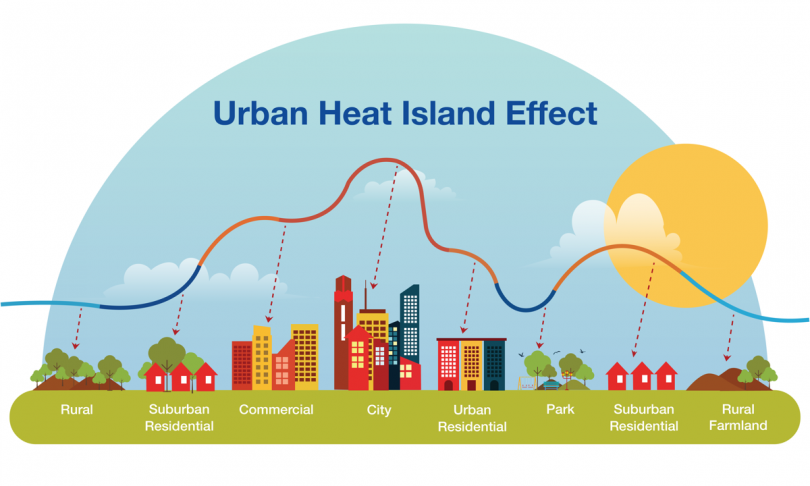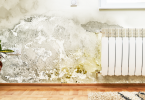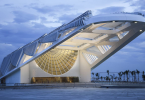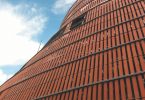“Urban Heat Island” or UHI phenomenon is experienced when the metro cities and other towns get rid of the natural plantations and greenery with concrete stones, pavements, and buildings. This menacing practice has a drastic effect on the environment, leading to a substantial increase in land surface temperatures. The pollution level in the air is alleviated considerably leading to several ailments and harmful effects on living beings. Let us first try to understand the key factors responsible for the “Urban Heat Island” effect and the tips to reduce the phenomenon.
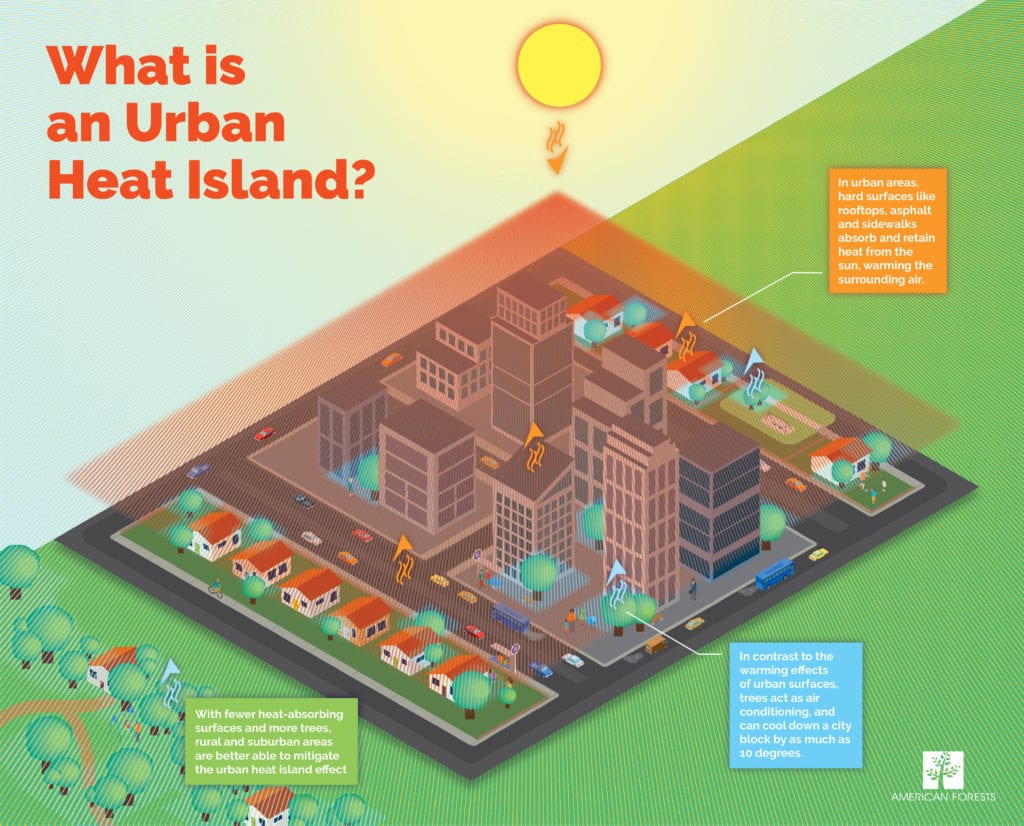
7 Key Factors contributing to the creation of “Urban Heat Island”
- Insufficient Greenery
Buildings and skyscrapers tend to neglect the need for planting trees and plants on their premises. The designers, architects, and engineers fail to realize the benefits of greenery that create shade and a cooling effect in the air. Besides plantations inside the buildings purify the air and enhance the oxygen level. The open spaces are categorically replaced with stones, pavements, and concrete flooring. Instead of beautifying the apartments with green plants and flowers, the builders focus more on tiles and flooring. Seldom do they perceive the harm they are causing to the environment as well as to humanity.
- Dark and Dull Coloured Roofs
Buildings are often roofed with dark and dull coloured tiles due to the dirt and dust outside. But little do we realize the amount of heat absorbed by such a roof tends to intensify the heat inside the building. It is one of the potential and serious causes of the urban heat island effect. On the contrary, light-colored roofs reflect the solar radiation and create a cooling sensation within the building interiors. The increase in temperature results in discomfort and health hazards for the people residing in the buildings and the apartments. The dark and dull roofs sadly create a heated canopy over the buildings that prevent the escape of the surface temperature.
- Paved Surfaces
It is a common practice while constructing buildings, to introduce paved and impermeable surfaces around the compound for a fancy look and feel. But the architects remain ignorant of the fact that it eventually surges the urban heat island phenomenon. Parking lots and the walking trails in the building premises are covered with paved surfaces which are incapable to absorb the rainwater. The water flows away to the drainage system instead of being soaked inside the soil for the survival of the plants and trees.
- Thermal Mass
Planning to establish and construct buildings in close proximity is another vital cause of the urban heat island effect. The wind is blocked, thus preventing the cooling effect due to convection. Besides it also prevents the pollutants from being dispersed. Buildings in urban areas accumulate a considerable amount of heat throughout the day from the solar power of the sun’s heat radiations. At night though the temperature cools down yet the buildings are slow in releasing the heat at the same pace the way they absorb the heat. The result adverse effects of overheating inside the buildings.
- Air Conditioning
The usage of air conditioning in urban areas is increasing at an exponential rate. While it reduces the temperature inside the buildings and creates a cooling effect, it releases heat into the outside environment. The heat is called “waste heat” which warms and increases the temperature; inappropriate for living beings. Several studies and analyses have proved that the use of air conditioning increases the air temperatures of the streets. Besides the effect is more at night since the atmospheric boundary is shallower at night compared to the daytime. The temperature in the outdoors has been deciphered to enhance more than 0.8K to 1K at night.
- Improper air circulation
Narrow streets, gigantic skyscrapers and buildings, inadequate ventilation, and lack of appropriate spacing between the buildings are responsible for poor air circulation in the adjacent surroundings. It further aggravates the temperature stability of the environment. This results in high surface and air temperatures leading to the urban heat island effect. In other words, it acts as a hindrance to the concept called evapotranspiration; a process by which water is evaporated from the hot surfaces and transpired from the plant leaves to the atmosphere. Besides improper air circulation causes air pollution, breathing difficulties, and asthmatic traumas.
- Ignorance of rainwater harvest
After the hot scorching heat of the summers, rains are welcomed gleefully. But in our enjoyment, we forget to preserve the rainwater for future use especially to reuse water in our daily chores. We neglect and ignore the phenomenon of rainwater harvest which brings in immense benefits. In situations like drought and water shortage, the stored rainwater can be reused. Even the water can be utilized for cooling the surface temperatures thus preventing the occurrence of the urban heat island.
Tips on how to reduce urban heat
Illustrated below are some of the important tips and recommendations on how to reduce urban heat:
- Opt for light coloured reflective roofing in the buildings and skyscrapers.
- Invest in landscape gardening within the building premises with annual maintenance to promote a green environment.
- Have a rooftop garden for reducing the surface temperature and allow evapotranspiration.
- Use energy-efficient electric equipment and appliances to reduce the burden of electricity thus supporting the lowering of heatwaves.
- Avoid unnecessary usage of air conditioning or coolers.
- While planning, designing, and architecting new building complexes, select eco-friendly building materials like Porotherm Smart Bricks, Clay Roof tiles, and Clay Façade Systems.
- Ensure proper spacing and allowance of air circulation in the building structure.
- Try to keep a balance between the paved surfaces and green surfaces.
Conclusion
It is the responsibility of all to protect the world for our future generation. The urban heat island effect is posting a threat to the environment and introducing health concerns among living beings. We must stop the occurrence by following the recommended tips and suggestions ensuring a cool atmosphere all around.

Authored by a Building Expert from Wienerberger India


